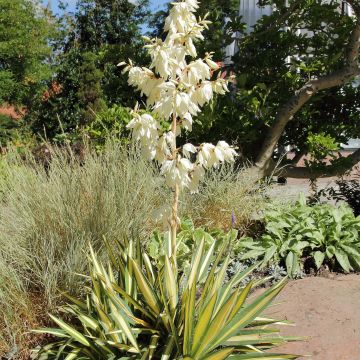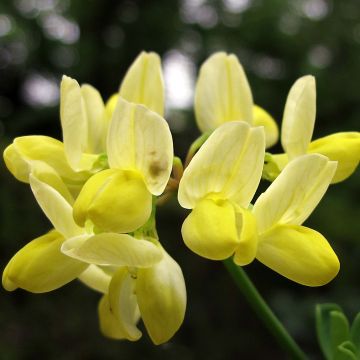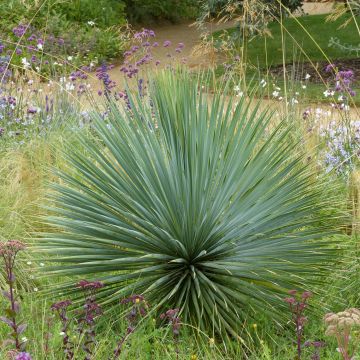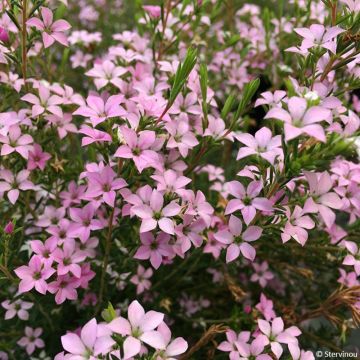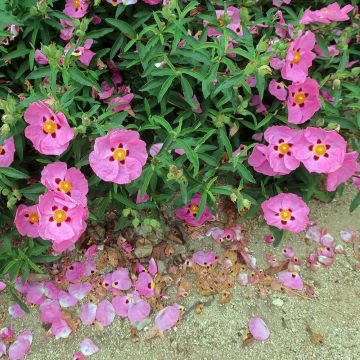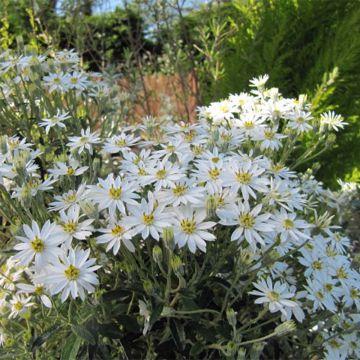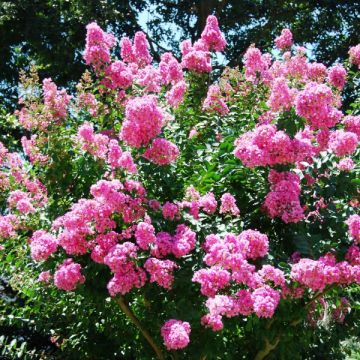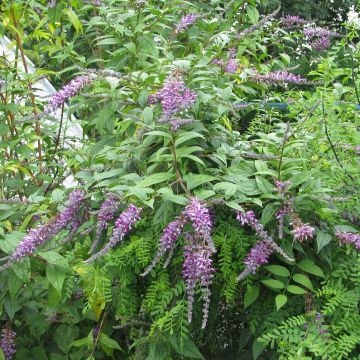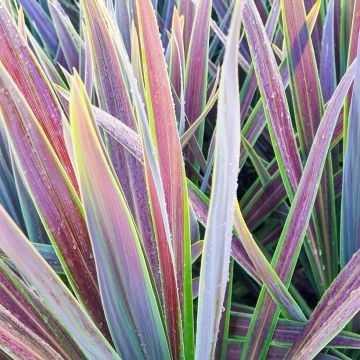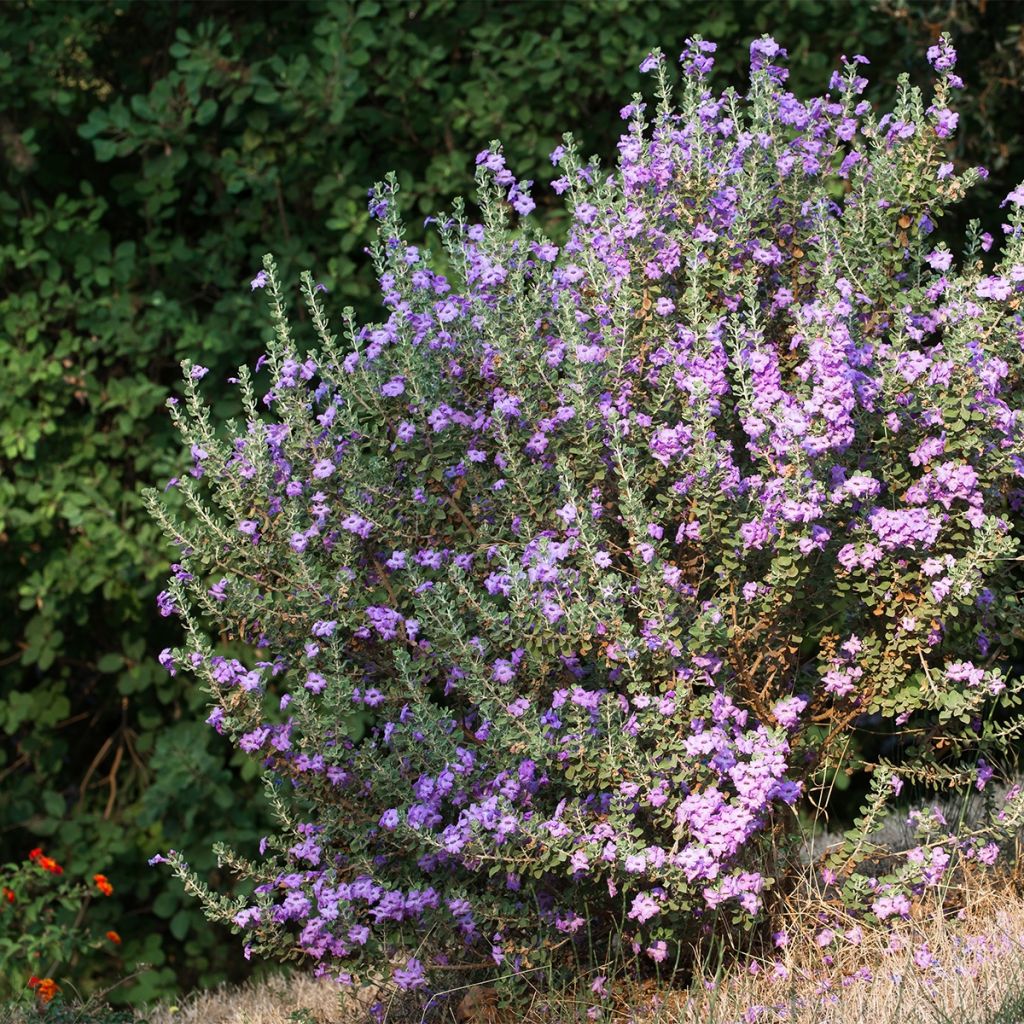

Leucophyllum langmaniae - Sauge du Rio Bravo
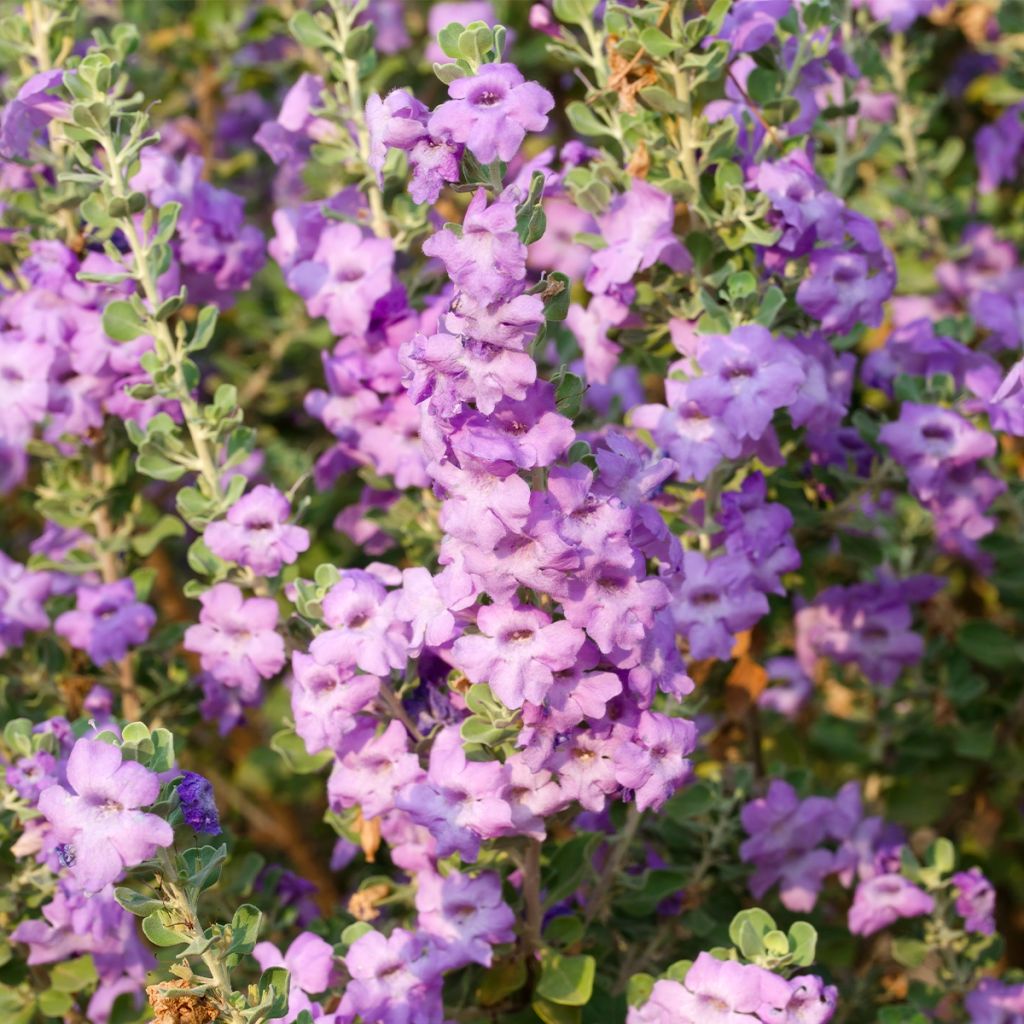

Leucophyllum langmaniae - Sauge du Rio Bravo
Leucophyllum langmaniae
Leucophyllum langmaniae
Rio Bravo Sage
This plant carries a 24 months recovery warranty
More information
We guarantee the quality of our plants for a full growing cycle, and will replace at our expense any plant that fails to recover under normal climatic and planting conditions.
From €5.90 for pickup delivery and €6.90 for home delivery
Express home delivery from €8.90.
Does this plant fit my garden?
Set up your Plantfit profile →
Description
Leucophyllum langmaniae, sometimes referred to as Rio Bravo Sage, is a bush for arid climate and soil that excels in our Mediterranean region's waterless gardens. It forms a beautiful bush with a naturally dense and slightly spreading habit and provides a magnificent flowering at the end of summer or beginning of autumn, with the return of rains. This rebirth accompanies that of the dry garden, which often welcomes autumn in grand style, like a second spring. It is an ideal companion for garrigue plants that have the same cultivation requirements. You will plant it in the rockery, on a slope, in a raised bed, but also in a large border along a path.
The Leucophyllum langmaniae is a bush from the Scrophulariaceae family. It is native to northern Mexico, specifically the Chihuahua desert where it grows in limestone soil. It is a plant very well adapted to water scarcity, coastal regions and limestone soils, which still tolerates cold quite well under good cultivation conditions (down to -10/-12°C (14/10.4 °F) at peak). The Rio Bravo Sage quickly forms a bush about 90 cm (35.4 in) high and 1 m (3 ft 4 in) wide. Its whitish, fairly flexible stems bear a dense, velvety, olive-green-grey foliage that persists in winter if there is no frost. The leaves are small, about 2.5 cm (1 in) long, oblong, slightly undulate, covered with a fine down. The flowering often takes place in 2 or 3 successive waves, from late August to late October. It is triggered by a supply of water following a long dry and hot period and will be all the more abundant as the summer has been dry. On the other hand, in regions where it regularly rains in summer, flowering is random. The small flowers are born in the axil of the leaves, they are small irregular corollas, villous, with petals fused at the base, measuring 2 to 3 cm (0.8 to 1.2 in), of a fairly bright rose-mauve colour. Its flowers are more mauve than those of its close relative, the Leucophyllum frutescens. The flowering of this bush attracts pollinating insects. Its root system secretes substances that inhibit the germination and growth of weeds.
The Leucophyllum langmaniae is a plant perfectly adapted to drought and of exceptional beauty at the end of the season: it has a solid temperament and robustness to any test if the conditions suit it. It is used in beds, in rockeries, on a slope, but also as a low hedge to border a path for example. Create a garrigue type bed with staggered flowering by mixing the foliage and scents of lavenders (blue, white, pink), rosemary (creeping or erect), Atriplex, oregano, cistus, nepetas, euphorbia for dry soils (E.characias, E. cyparissias), creeping ceanothus. Its association with Leucophyllum frutescens, the Polygala myrtifolia, the Teucrium fruticans Azureum and the evergreen ceanothus Automnal Blue which flower at the end of summer in dry gardens, is very successful.
Report an error about the product description
Plant habit
Flowering
Foliage
Botanical data
Leucophyllum
langmaniae
Scrophulariaceae
Rio Bravo Sage
North America
Planting and care
The Leucophyllum langmaniae is planted early in the spring or in September-October in regions where the summer is very dry and very hot. It appreciates a very sunny exposure and requires a very well-drained soil, ideally stony and rather calcareous. Planting on a slope, in a rockery or in a gravel bed is preferable in climates more humid than the south of France. The Rio Bravo sage adapts to sandy soils and tolerates sea spray. This bush is hardy up to -10/-12°C at the peak, after 2 or 3 years of cultivation and provided that the soil that hosts it is dry enough. It is a semi-arid climate plant that poorly tolerates humid summers as well as severe frosts, especially if the soil is heavy and moist. It has the same cultivation requirements as cistuses and lavenders, and its flowering is only abundant when the summer is particularly dry. Once well rooted, its resistance to lack of water is excellent. Prune lightly after flowering to maintain a compact habit. The root system of this bush secretes substances that inhibit the germination and growth of weeds: in a non-watered bed, it will become unnecessary to weed around its base.
Pot cultivation: in a well-drained substrate, mix of compost, gravels and garden soil. Use a large container with holes at the bottom and arrange a drainage bed made of gravels, shards of pottery or clay balls. Add an organic fertiliser in autumn. A plant grown in a pot will need to be watered regularly and deeply, but at spaced intervals to let the soil dry between two waterings. Shelter your potted plant in winter, protected from severe frosts, in a bright place, but not heated.
Planting period
Intended location
Care
This item has not been reviewed yet - be the first to leave a review about it.
Mediterranean shrubs
Haven't found what you were looking for?
Hardiness is the lowest winter temperature a plant can endure without suffering serious damage or even dying. However, hardiness is affected by location (a sheltered area, such as a patio), protection (winter cover) and soil type (hardiness is improved by well-drained soil).

Photo Sharing Terms & Conditions
In order to encourage gardeners to interact and share their experiences, Promesse de fleurs offers various media enabling content to be uploaded onto its Site - in particular via the ‘Photo sharing’ module.
The User agrees to refrain from:
- Posting any content that is illegal, prejudicial, insulting, racist, inciteful to hatred, revisionist, contrary to public decency, that infringes on privacy or on the privacy rights of third parties, in particular the publicity rights of persons and goods, intellectual property rights, or the right to privacy.
- Submitting content on behalf of a third party;
- Impersonate the identity of a third party and/or publish any personal information about a third party;
In general, the User undertakes to refrain from any unethical behaviour.
All Content (in particular text, comments, files, images, photos, videos, creative works, etc.), which may be subject to property or intellectual property rights, image or other private rights, shall remain the property of the User, subject to the limited rights granted by the terms of the licence granted by Promesse de fleurs as stated below. Users are at liberty to publish or not to publish such Content on the Site, notably via the ‘Photo Sharing’ facility, and accept that this Content shall be made public and freely accessible, notably on the Internet.
Users further acknowledge, undertake to have ,and guarantee that they hold all necessary rights and permissions to publish such material on the Site, in particular with regard to the legislation in force pertaining to any privacy, property, intellectual property, image, or contractual rights, or rights of any other nature. By publishing such Content on the Site, Users acknowledge accepting full liability as publishers of the Content within the meaning of the law, and grant Promesse de fleurs, free of charge, an inclusive, worldwide licence for the said Content for the entire duration of its publication, including all reproduction, representation, up/downloading, displaying, performing, transmission, and storage rights.
Users also grant permission for their name to be linked to the Content and accept that this link may not always be made available.
By engaging in posting material, Users consent to their Content becoming automatically accessible on the Internet, in particular on other sites and/or blogs and/or web pages of the Promesse de fleurs site, including in particular social pages and the Promesse de fleurs catalogue.
Users may secure the removal of entrusted content free of charge by issuing a simple request via our contact form.
The flowering period indicated on our website applies to countries and regions located in USDA zone 8 (France, the United Kingdom, Ireland, the Netherlands, etc.)
It will vary according to where you live:
- In zones 9 to 10 (Italy, Spain, Greece, etc.), flowering will occur about 2 to 4 weeks earlier.
- In zones 6 to 7 (Germany, Poland, Slovenia, and lower mountainous regions), flowering will be delayed by 2 to 3 weeks.
- In zone 5 (Central Europe, Scandinavia), blooming will be delayed by 3 to 5 weeks.
In temperate climates, pruning of spring-flowering shrubs (forsythia, spireas, etc.) should be done just after flowering.
Pruning of summer-flowering shrubs (Indian Lilac, Perovskia, etc.) can be done in winter or spring.
In cold regions as well as with frost-sensitive plants, avoid pruning too early when severe frosts may still occur.
The planting period indicated on our website applies to countries and regions located in USDA zone 8 (France, United Kingdom, Ireland, Netherlands).
It will vary according to where you live:
- In Mediterranean zones (Marseille, Madrid, Milan, etc.), autumn and winter are the best planting periods.
- In continental zones (Strasbourg, Munich, Vienna, etc.), delay planting by 2 to 3 weeks in spring and bring it forward by 2 to 4 weeks in autumn.
- In mountainous regions (the Alps, Pyrenees, Carpathians, etc.), it is best to plant in late spring (May-June) or late summer (August-September).
The harvesting period indicated on our website applies to countries and regions in USDA zone 8 (France, England, Ireland, the Netherlands).
In colder areas (Scandinavia, Poland, Austria...) fruit and vegetable harvests are likely to be delayed by 3-4 weeks.
In warmer areas (Italy, Spain, Greece, etc.), harvesting will probably take place earlier, depending on weather conditions.
The sowing periods indicated on our website apply to countries and regions within USDA Zone 8 (France, UK, Ireland, Netherlands).
In colder areas (Scandinavia, Poland, Austria...), delay any outdoor sowing by 3-4 weeks, or sow under glass.
In warmer climes (Italy, Spain, Greece, etc.), bring outdoor sowing forward by a few weeks.




































